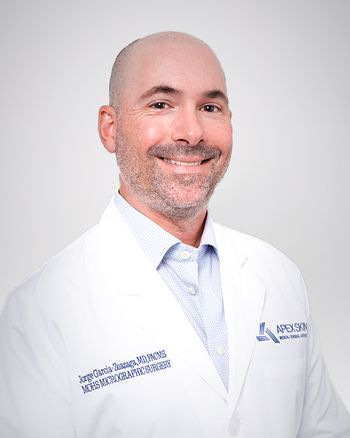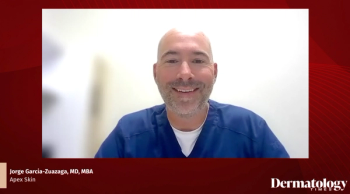
Equity firms pressure to sell: What’s best for you
What’s best for dermatologists, when they’re faced with an opportunity to join a larger practice? What are the options and ramifications? A panel of dermatologists tackled these crucial questions during a session at the recent annual meeting of the American Society for Dermatologic Surgery.
Equity firms have dermatologists on the mind and on the menu: They’ve been busy gobbling up dermatology practices and merging them in a bid to make a killing in the lucrative world of American skin care. Meanwhile, independent dermatologists are facing other kinds of pressure to join forces and say goodbye to their independence.
READ:
But what’s best for dermatologists themselves? What should they think about when they’re faced with an opportunity to join a larger practice? A panel of dermatologists tackled these crucial questions during a session at the recent annual meeting of the American Society for Dermatologic Surgery.
One thing is clear: It’s going to get tougher for independent dermatologists to continue making the same income as in the past. “The issues that face dermatologists today are pretty universal in medicine,” says Dr. Greg Morganroth, M.D., founder and CEO of California Skin Institute. “There’s decreased reimbursement on the horizon, yet overhead continues to climb. Those physicians who aren’t capable of evolving their repertoire of dermatology services are going to find it hard to be profitable.”
There’s also a generational divide, with younger dermatologists more open to joining group practices. “They don’t want to go out and start their own practice because of all the administrative burdens,” says W. Patrick Davey, M.D., MBA, FACP, a dermatologist based in Lexington, Ky., and immediate past chair of the Accreditation Association for Ambulatory Health Care board of directors.
ALSO READ:
Indeed, Dr. Davey provided statistics showing that only 41% of dermatologists over age 59 are in multi-specialty or dermatology group practices compared to more than two-thirds of those under age 40. Meanwhile, half of those over 59 are solo and 41% of those age 50-59, compared to just 15% of those under 40.
Health care reform is also focusing minds, Dr. Davey says. “In the future, we’ll have risk sharing, and we’re going to have to take on more risk. I think you’ll see bundled payments, like when a hospital will be paid X number of dollars for taking care of someone with pneumonia. I could see the same thing with skin care, like for a basal cell carcinoma.”
Making your choice
Independent dermatologists face several options going forward if they want to continue working:
• Join a large, private equity-backed practice via a buyout. “Keep in mind that the firm will invest typically for 5-7 years before selling to a new owner who may have different plans for the business,” Dr. Morganroth says. “The private equity firms seek to make a substantial profit for their investors and themselves. In order to make a high enough return on the practice purchase, you may have to take a pay cut unless you have untapped pathology and surgery revenues.”
READ:
• Join an HMO, multiple specialty group, academic practice or military practice. Dr. Morganroth advises that dermatologists ask themselves this question: “Do you want to be an employee in a large non-private practice group where the responsibilities of owning your practice are taken over for you? That means less aggravation and more long-term security at the cost of making less money and having to conform to an institutional style of practice.”
• Merge with peers to create a larger group practice. While equity firms have been barraging dermatologists with offers to buy them, Dr. Morganroth chose to join with more than 30 practices spread across Northern California. While this approach brings headaches in terms of management hassles and 240 employees, he says, “We've been able to create a large, physician-run private practice that allows us to get better reimbursement and lower cost of goods through leverage over insurance companies and suppliers.”
Other benefits have come through the sharing of resources like cosmetic technologies and a single business office and the addition of other services lines including plastic surgery, outpatient surgery centers, a full-service dermatopathology lab, and a vein center, says Dr. Morganroth. “It’s really no more risk than being on your own when you run a good practice and you put into place all the safety measures in terms of really good doctors, proper compliance and oversight and a good management team,” he says.
ALSO READ:
• Get bought out but don’t stop working. “I have a number of friends who are selling their practices,” Dr. Davey says. “They’re getting paid for the equity they’ve built up, and then they get kept on as a consultant or worker bee for a certain number of years.”
• Continue to stand alone as an independent. “If you don’t have business management skills, hire a good business manager to help you optimize the efficiency of your practice,” Dr. Morganroth says. He also recommends diversifying your practice.
“If you’re a general dermatologist, you should learn to do surgery and cosmetic procedures,” he says. “Add services that provide a hedge against decreasing insurance reimbursement, just like you’d put together a diversified investment portfolio for your retirement money.”
Moving forward
Is there reason for hope instead of fear going forward? Dr. Davey thinks so. “There are several options, and we’re not in a single-payer system, which most of us fear the most,” he says. “In a sense, no matter what age we are, we’re all going back to when we started. For many of us, that was the best time in our careers. That’s the hopeful part.”
Newsletter
Like what you’re reading? Subscribe to Dermatology Times for weekly updates on therapies, innovations, and real-world practice tips.
















